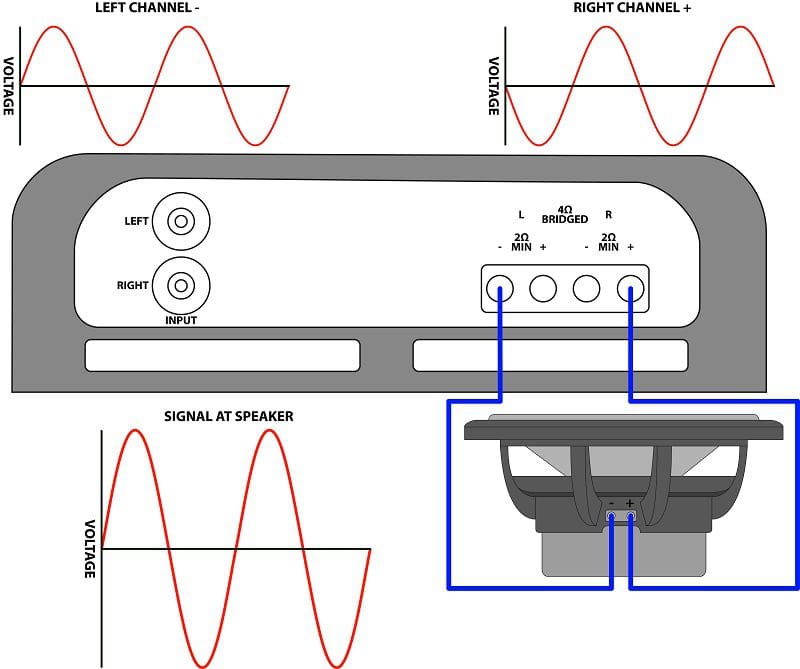
The result is the horribly deafening whistle weĬall feedback. Re-amplified-only to pass through the speaker once more and beĪmplified yet again. Supposed to), but also the amplified sound of the voice or instrumentĬoming from the speaker slightly after, which is then Not only the sound of a person's voice or an instrument (as it's Turned up too much or placed too near to a loudspeaker, it picks up Microphones on stage are very familiar with it. Will simply produce the same level of output-a phenomenon known asĬlipping-and increasing amounts of distortion.Īnother problem amplifiers have is called feedback-and people who use That means any further increases in the input As the input amplitude increases, the amplifier will struggle to produce aĬorresponding increase in output, because there's a limit to how much If the input signal is too large, the response will be linear up to a point and then "clipped" beyond it: even if you increase the input, the output doesn't increase as much.Īmplifiers also have to work across a wide range of amplitudes (typically that means sound volumes), Bottom: Clipping: In practice, no amplifier will have a perfectly linear response: it can only amplify so much. Here you can see that the output (vertical axis) is always ten times greater than the input (horizontal axis). Small earbud headphones are often designed this way soĬharts: Top: Linear amplification: If the gain of an amplifier is always the same, no matter what the input signal, we call that a linear response. Input frequencies in its output, it suffers from what's called aįrequency response, which means it boosts someįrequencies more than others. If the amplifier doesn't faithfully reproduce Ideally, it has to produce a reasonably flat response or linear response with a wide range ofĭifferent input signals (so the gain is pretty much constant across a Of frequencies over which it works satisfactorily is called itsīandwidth. In both frequency and amplitude (for an audio amplifier, that meansĪn audio amplifier might work better with some sound frequencies than others the range Input signal even when that signal is constantly (and sometimes dramatically) varying The hard bit is that it must faithfully reproduce the quality of the Now the key thing about an amplifier is not just that it boosts an electric current.

For audio (sound) amplifiers, the gain is often expressed inĭecibels (specifically, it's ten times the logarithm of the output power divided by the input power). So anĪmplifier that doubles the size of the original signal has a gain ofĢ. (or sometimes the gain factor or amplification factor). Signal to the input signal, a measurement called the gain of an amplifier It's easy to calculate how much difference an amplifier makes: it's the ratio of the output

Placed inside your ear canal so you hear a much-magnified version of A transistor-based amplifier takes the signal (the input)Īnd boosts it many times before feeding it into a tiny loudspeaker Sounds from the world around you and convert them into a fluctuatingĮlectric current (a signal) that constantly changes in Wear a hearing aid, you'll know it uses a

Photo by Denise Rayder courtesy of US Air Force.Īn amplifier (often loosely called an "amp") is an electromagnetic orĮlectronic component that boosts an electric current.

It's a type of probe that can test a circuit without direct electrical contact and works through electromagnetic induction, a bit like Photo: Testing telephone circuits with an inductive amplifier. Photo by courtesy of the Science Museum, London, published on Wikimedia Commons under a Creative Commons Licence (CC BY-SA 2.0). Photo: A home-made Williamson vacuum tube (valve) amplifier from around 1949, built from a magazine article to a design by D T N Williamson. Loudspeakers and the huge black boxes you plug intoĮlectric guitars to make them raise the roof. They're also the gadgets in radios that boostįaraway signals and the devices in stereo equipment that drive your Match, you will understand the concept of amplification."Īmplifiers are the tiny components in hearing aids that make voices Mule with the energy expended by yourself in the striking of the If you then compare the energy expended shortly thereafter by the William Shockley, Nobel-Prize winning co-inventor of the transistor (a revolutionaryĮlectronic amplifier dating from the 1940s) had a vivid way ofĮxplaining it: "If you take a bale of hay and tie it to the tail ofĪ mule and then strike a match and set the bale of hay on fire, and


 0 kommentar(er)
0 kommentar(er)
